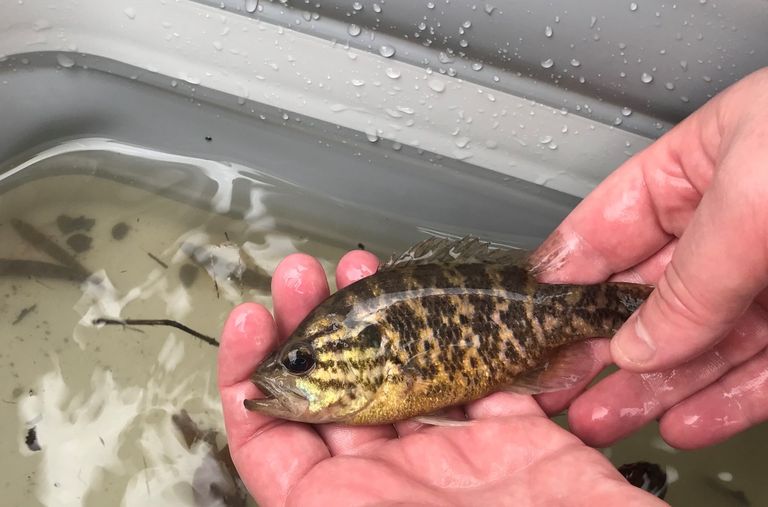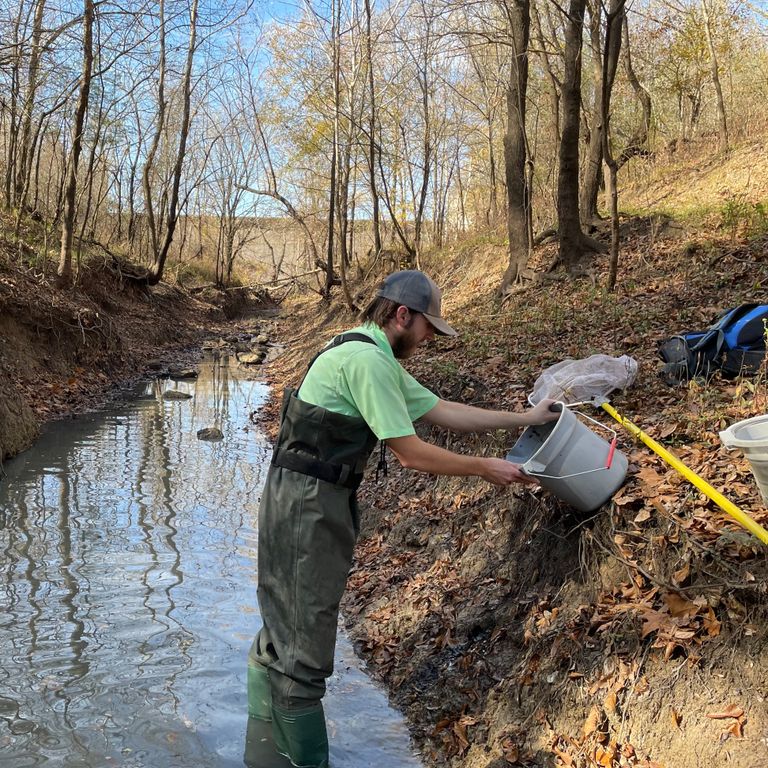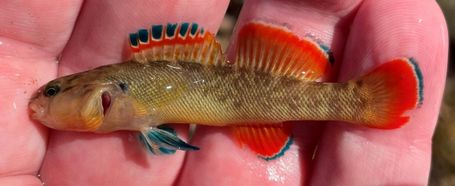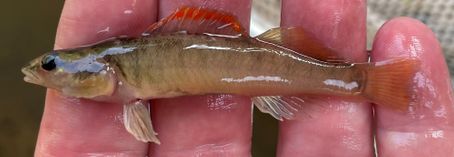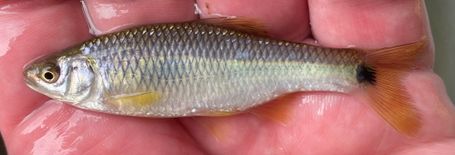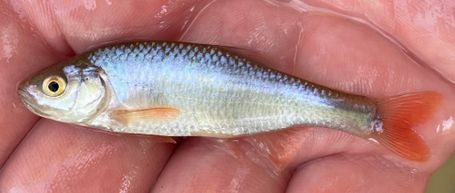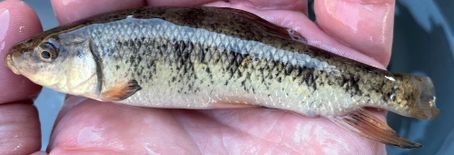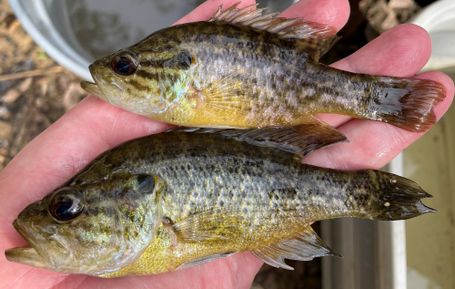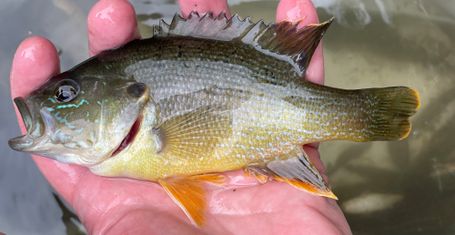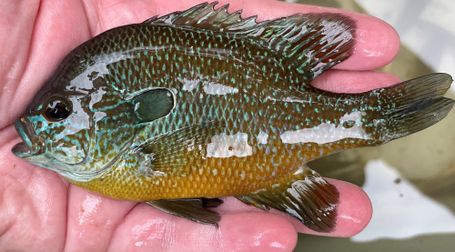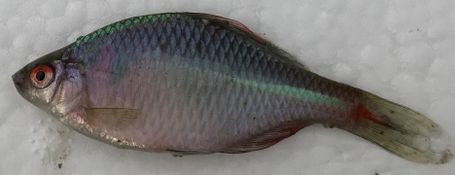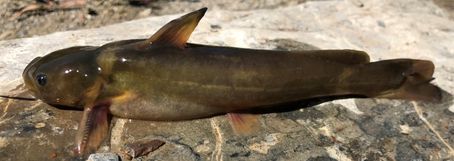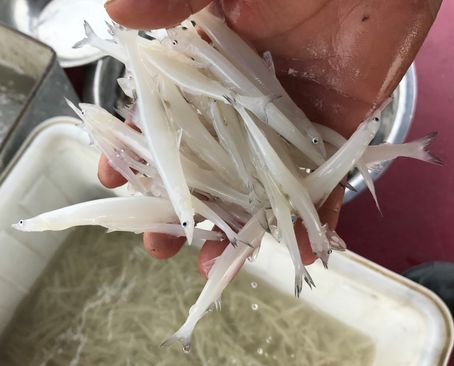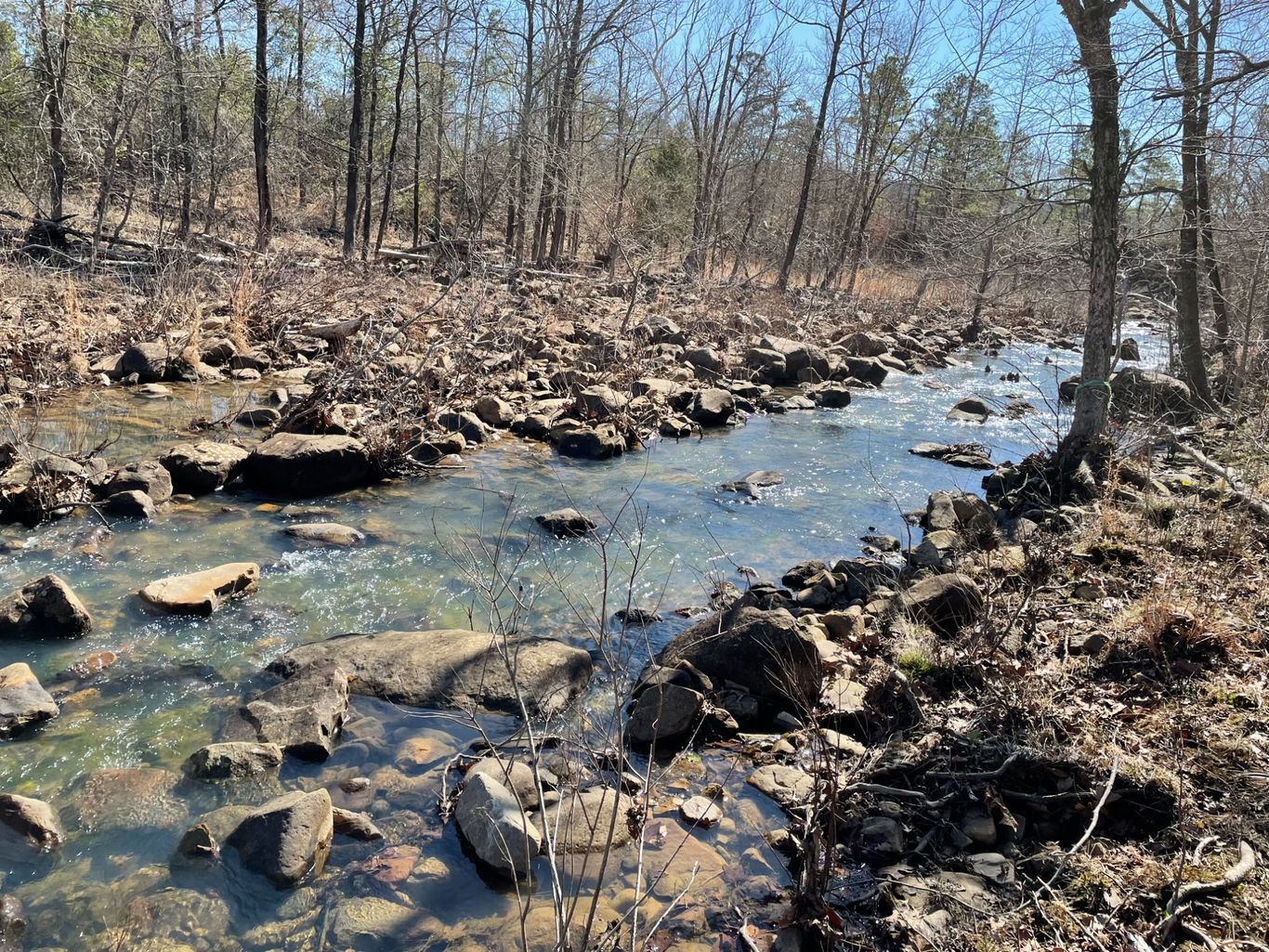
Welcome to the TAMUC Aquatic Molecular Ecology Lab!
We are researchers that investigate broad questions in spatial aquatic ecology across different study taxa in North America and Asia. Our research mainly focuses on riverscape effects on aquatic communities and populations, often using population genetic tools, and often examining freshwater fishes. We are located in northern Texas within the Department of Biological and Environmental Science at Texas A&M University-Commerce.
Research Interests
-Riverscape genetics and investigating drivers of genetic isolation and connectivity of aquatic species
-Assessing landscape factors that impact spatial community patterns
-Identifying landscape influences on occurrence and abundance patterns of rare aquatic species
-Using genetic data to model and assess the spread of aquatic invasive species
We are particularly interested in how anthropogenic modifications such as reservoirs and inter-basin water diversions affect the above processes.
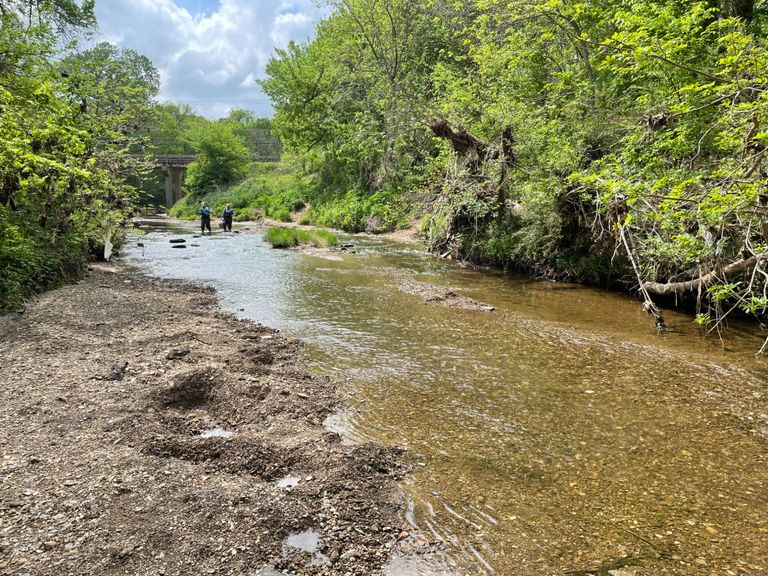
Lab News
September 2022
New Paper: Stepping-Stone Dispersal Colonization Pattern Among Lakes Connected by Large-Scale Water Diversion
This paper is collaborative research with researchers from the Institute of Hydrobiology, Chinese Academy of Sciences. Five lakes are connected by a large water diversion project in China that moves a large volume of water North, through the lakes (East Route of the South-to-North Water Diversion Project). There have been several invasions/range expansions in these connected storage lakes in recent years, facilitated by the water diversion connections. As part of a larger project in this system, we have analyzed three different species to examine patterns of their population expansion. This paper describes the patterns for the bearded worm goby, Taenioides cirratus, which exhibits a linear stepping-stone pattern among the lakes of the East Route. We expect to compare these results with two other species to see specific ecological factors that are causing different colonization patterns in the system. https://doi.org/10.1111/fwb.13997


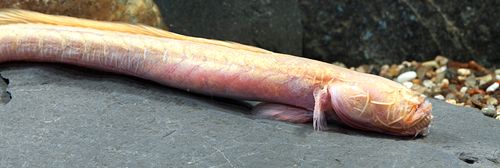
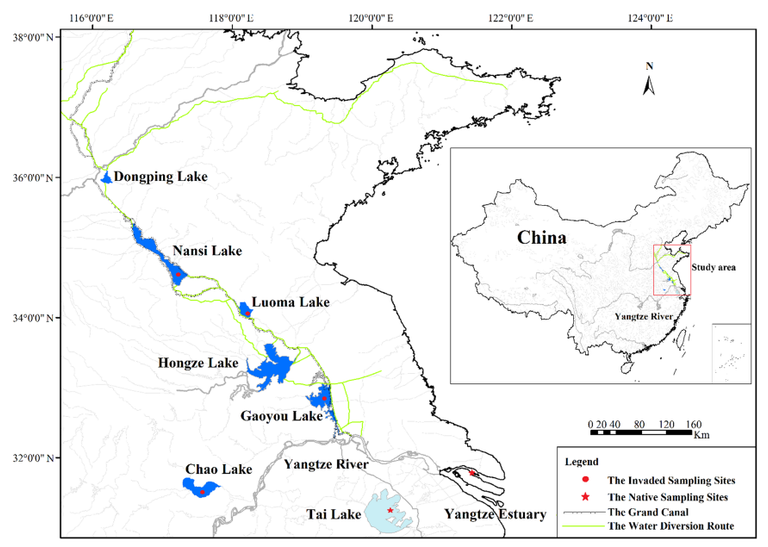
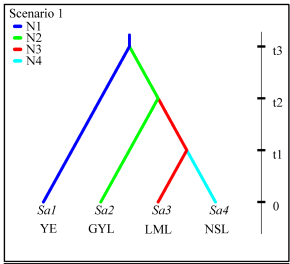
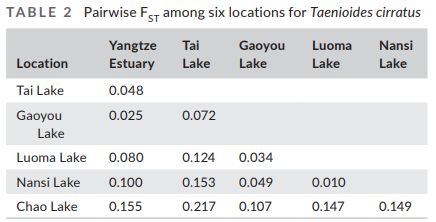

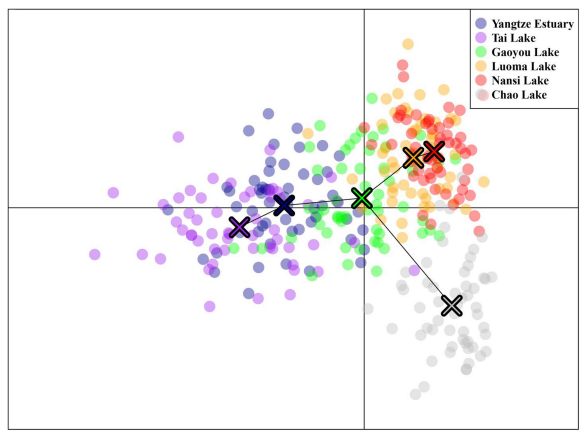
Fall 2022
Red River fish sampling
More habitats were sampled in the Red River for fish community data for comparison with orangebelly darter habitats. We did not find more orangebelly darter habitats (previously had found 5 locations in Texas last Spring), but saw some interesting habitats and communities in North Texas.
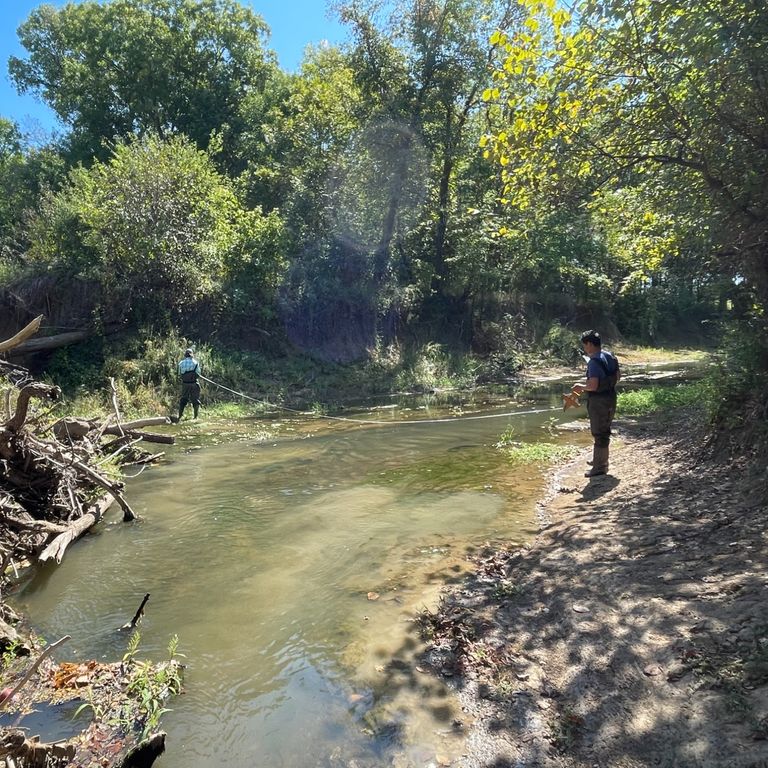
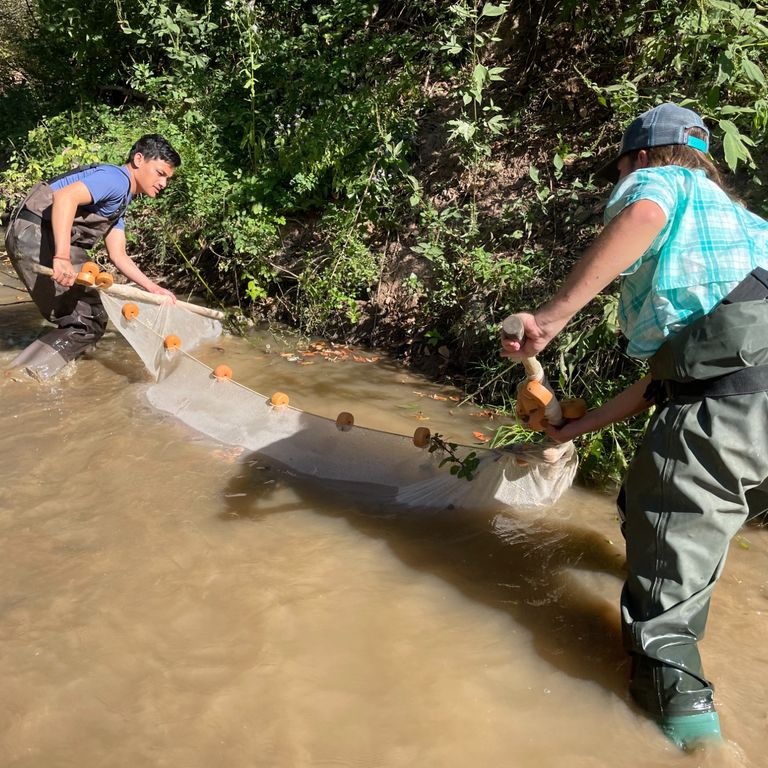
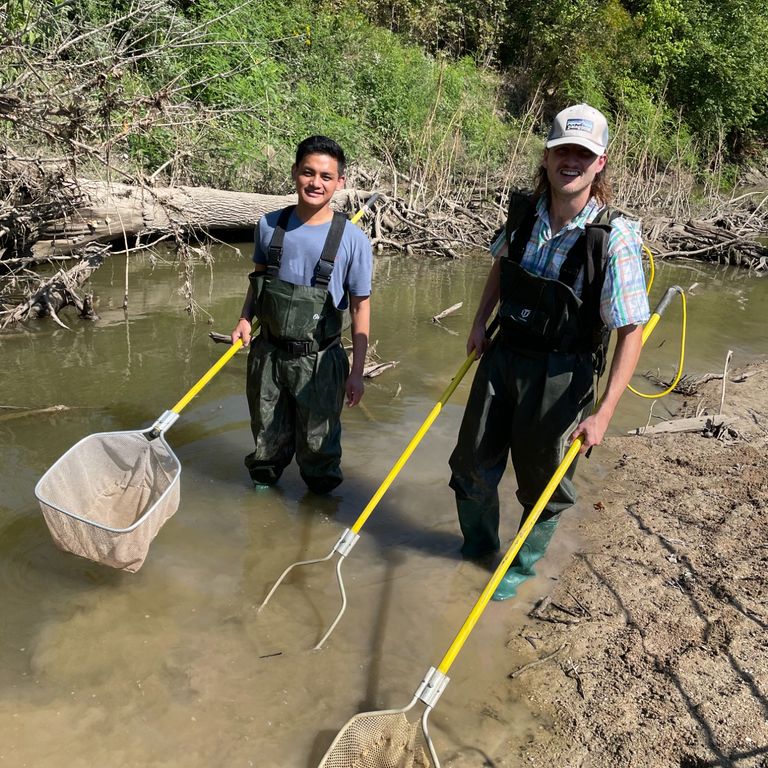
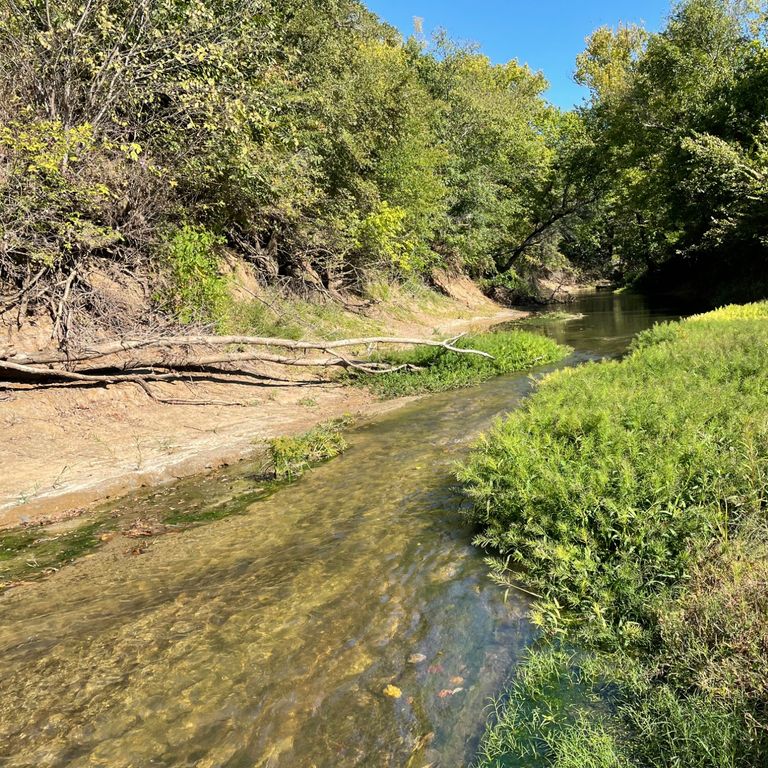
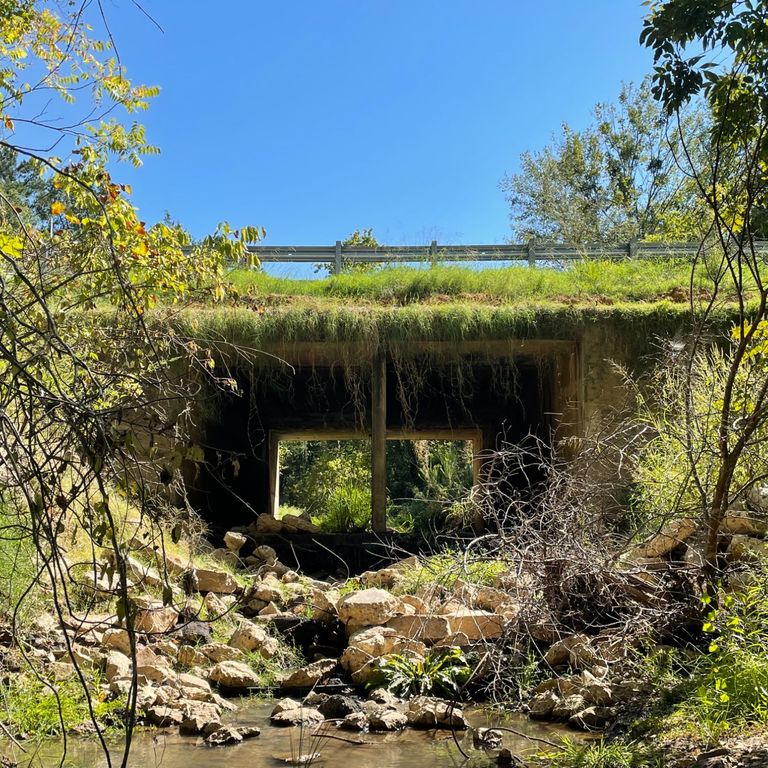
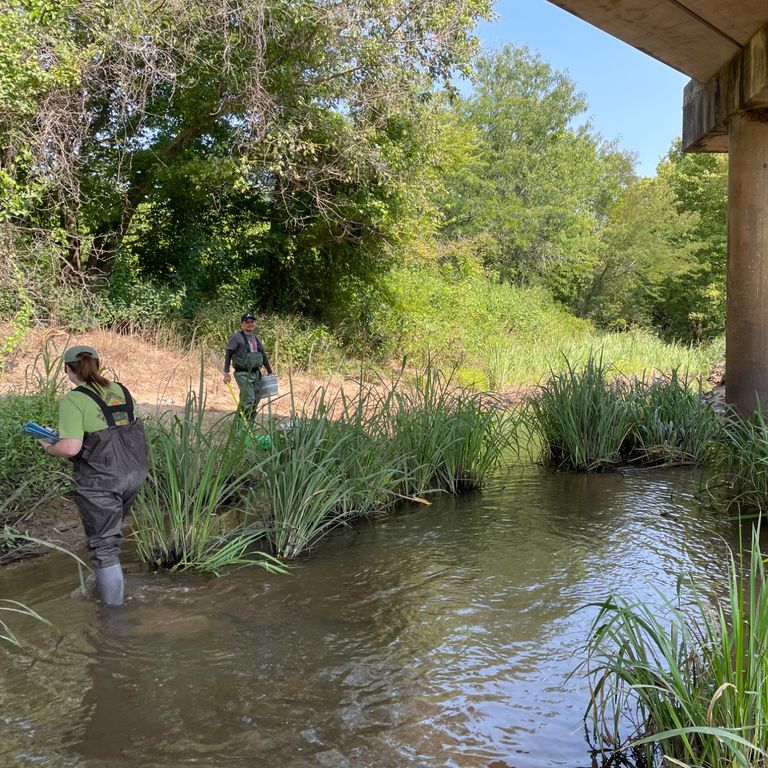
Fall 2022
Cottonmouth sampling
Summer drought caused wetlands to become dry. We expanded the project to sample in the river, and have had better results catching snakes in this location. Sampling will continue until snakes move to hibernicula when temperatures drop. Kirsti and the undergraduate students working on the project have done a great job safely finding and collecting data from snakes.
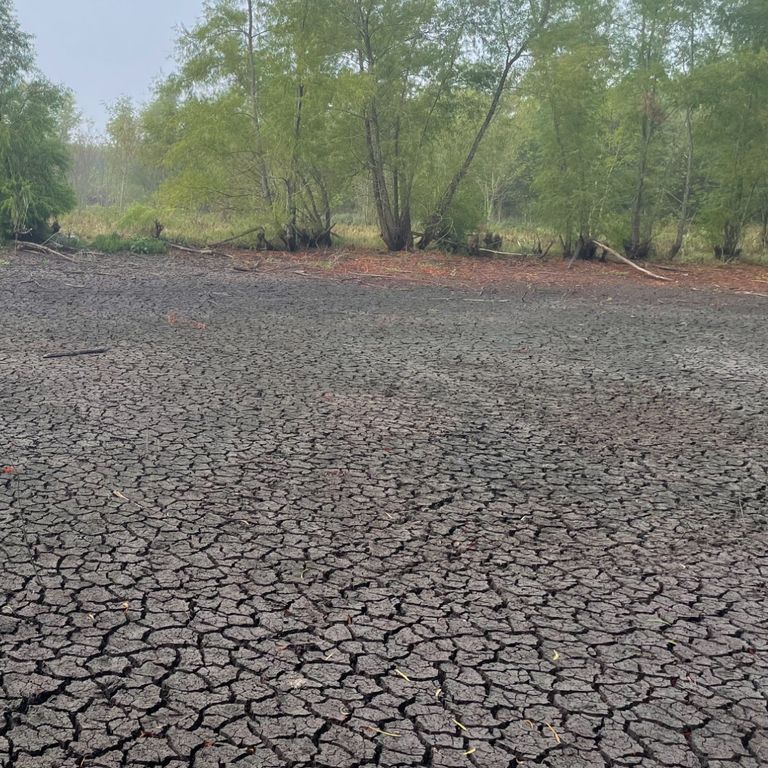
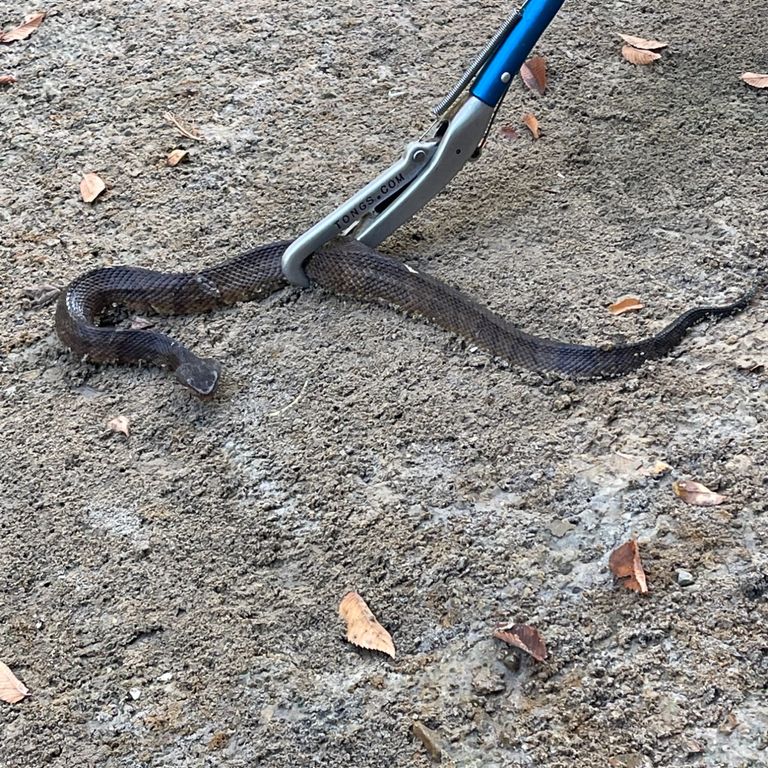
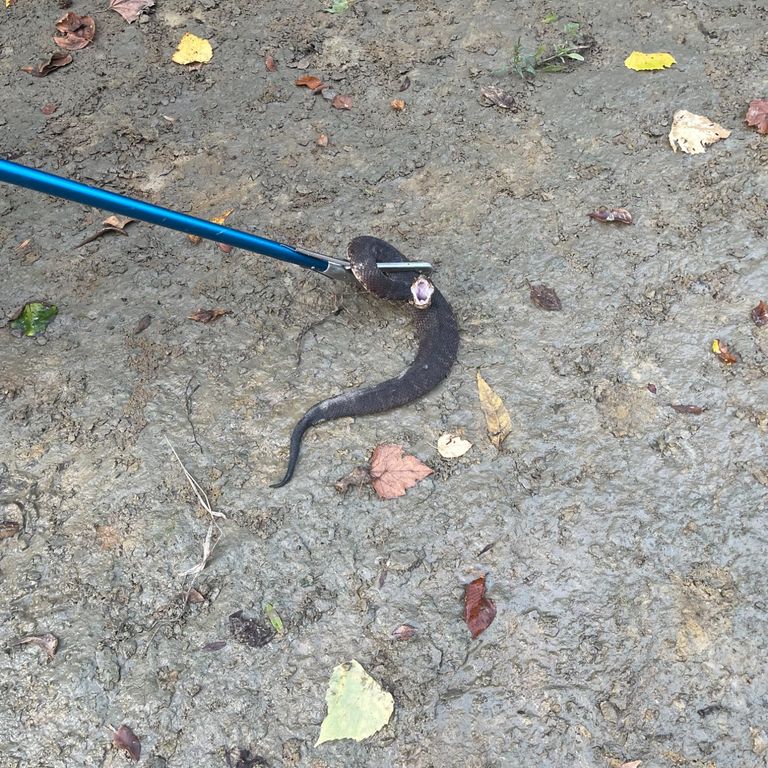
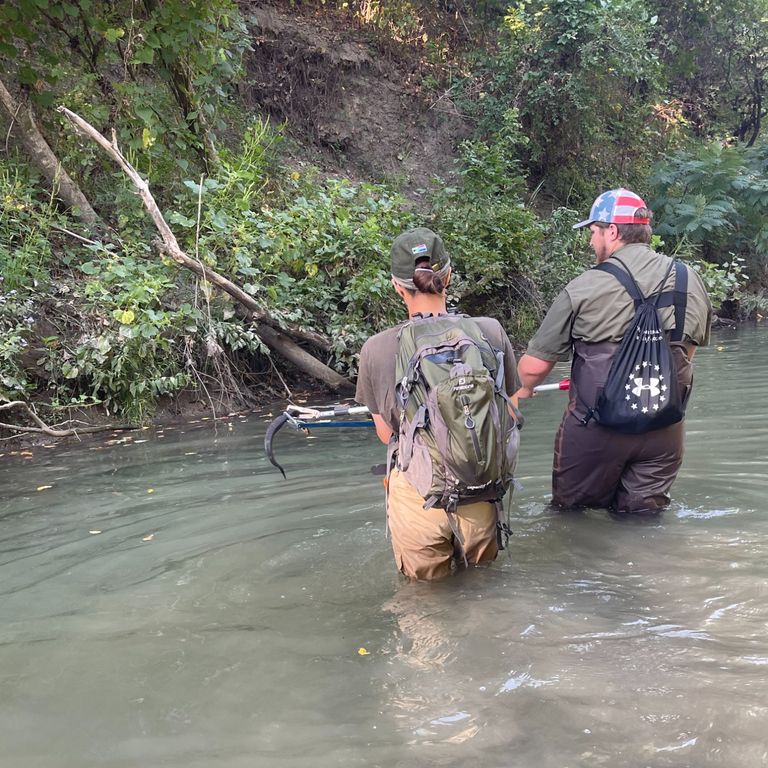
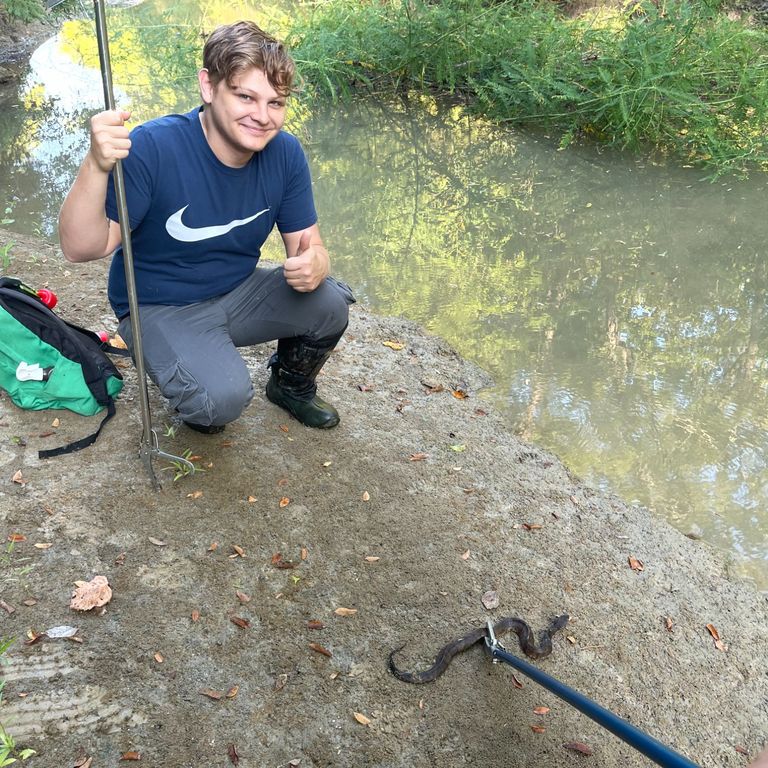
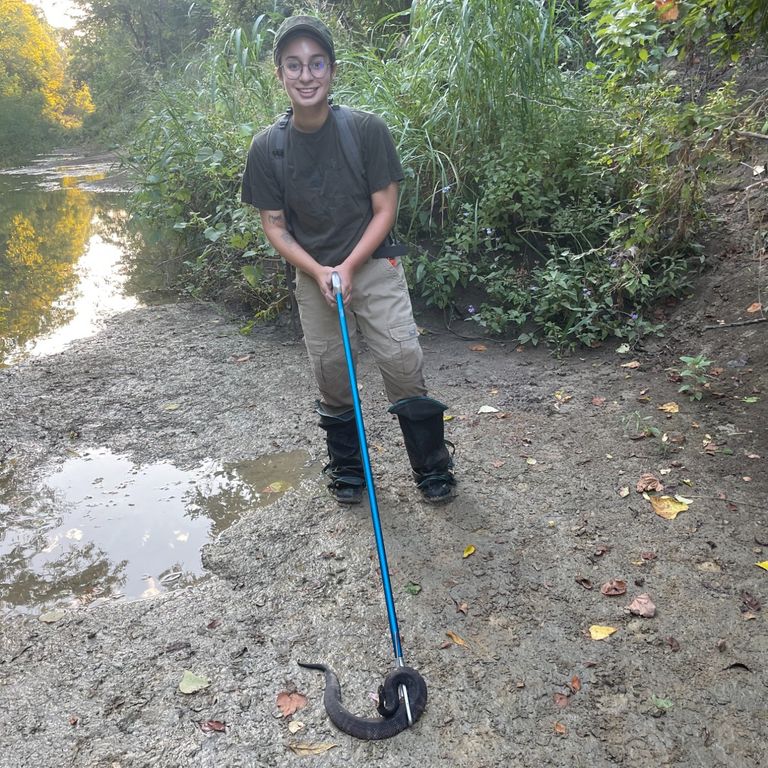
Summer 2022
Cottonmouth sampling
Sampling has begun around Commerce in wetland habitats for Agkistrodon piscivorus. We are taking several measurements from captured snakes, implanting pit tags, and taking tissue samples for landscape genetic analysis. Sampling will continue throughout the summer.
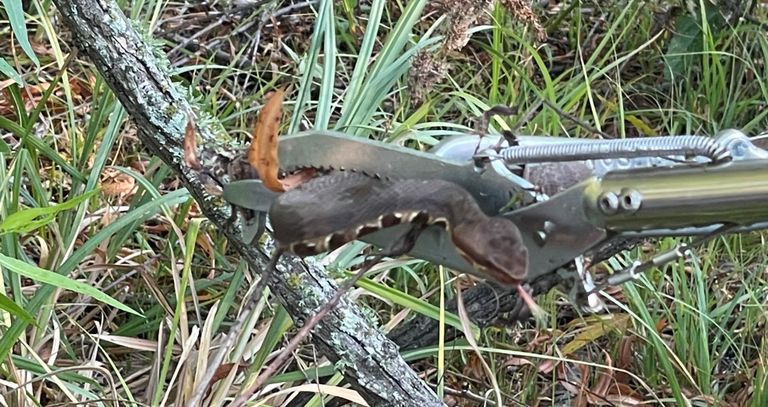
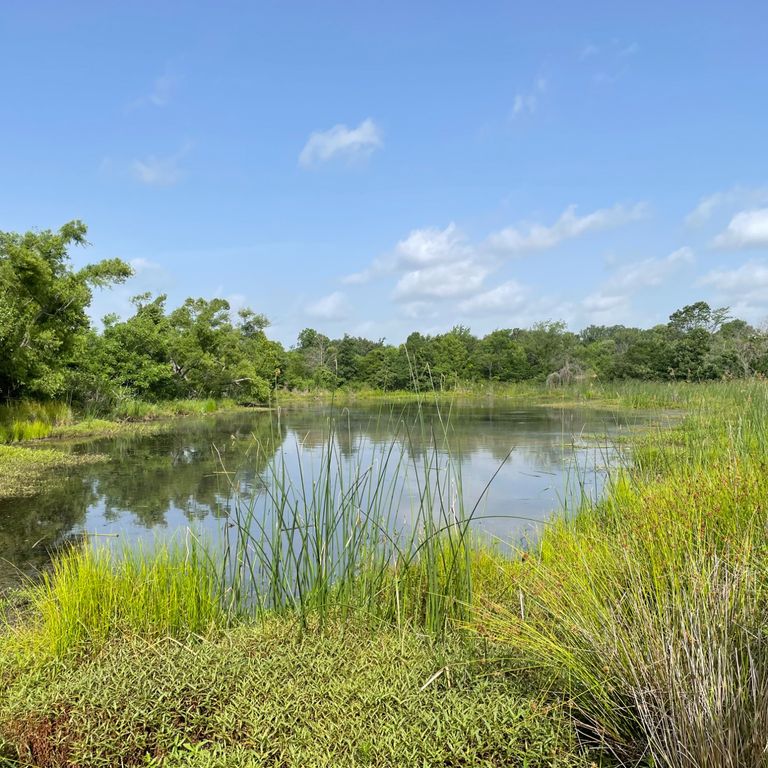
April 2022
A&M Commerce Research Symposium - Award
Hannah Henry presented lab research regarding the effects of small reservoirs on upstream fish communities in the Bois D'Arc Creek system at the Texas A&M-Commerce Annual Research Symposium. She won first place for the College of Science and Engineering: undergraduate poster division. Congratulations, Hannah!
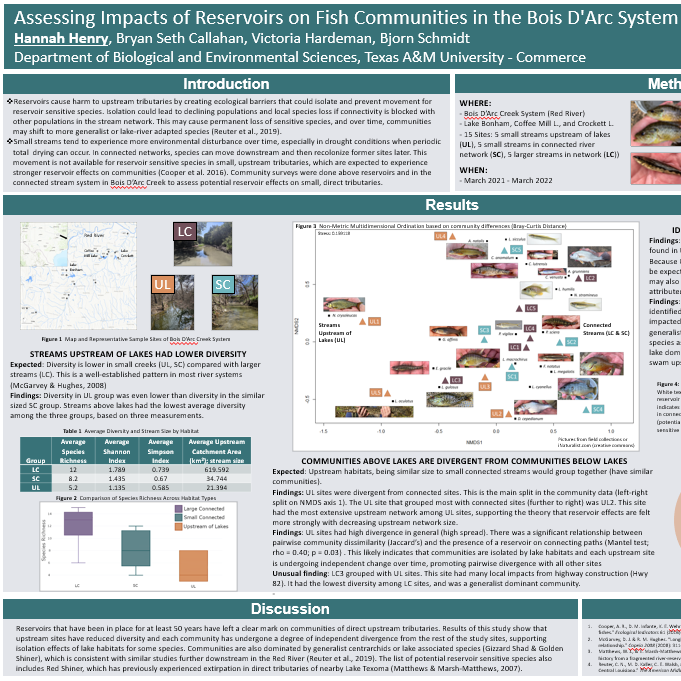
Spring 2022
Red River Fish Sampling
Sampling continued in the Spring along tributaries of the middle Red River for orangebelly darters, Etheostoma radiosum. This fish is rare and is a species of greatest conservation need in Texas. Two lab projects are examining habitat and community associations of Texas sites with orangebelly darters present and examining genetic population structure and the influence of riverscape features, reservoirs, and the main stem of the Red River on genetic isolation between orangebelly populations. At the end of spring, five Texas populations have been found for these projects out of around forty sites that were sampled.
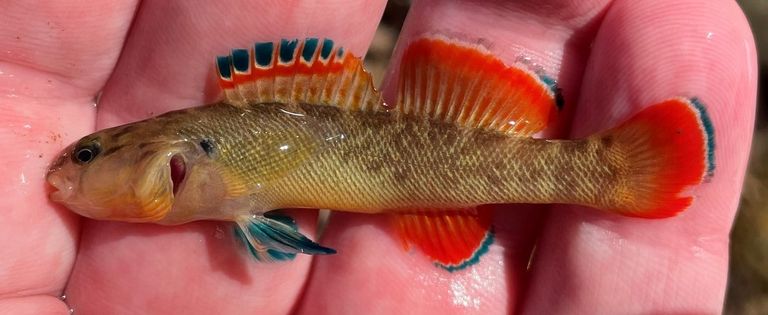
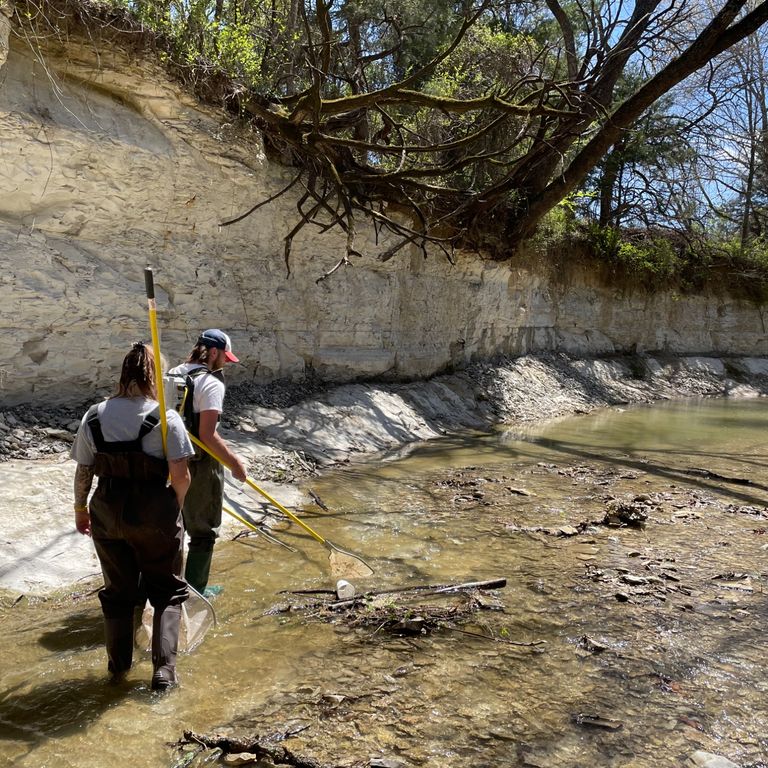
October 2021
New Paper: Spatial Pattern of Larval Drift in the Lower Yangtze River in Relation to Floodplain Lakes
This paper is collaborative research with researchers from Wuxi Fisheries College, Nanjing Agricultural University. Results of the study showed that spatial patterns of abundance and diversity of drifting larval fish found in the lower Yangtze River declined linearly from upstream towards downstream. This pattern matched a linear gradient of decline for the availability of fully connected and isolated (rarely connected) lateral floodplain lakes, which are crucial for breeding, nursing, and fish recruitment in this system. This study can be used to inform management and conservation of fish resources in the river, through better understanding of prevailing spatial recruitment patterns for fish populations. https://doi.org/10.1111/eff.12640

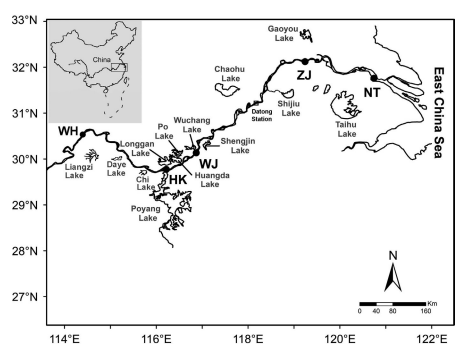
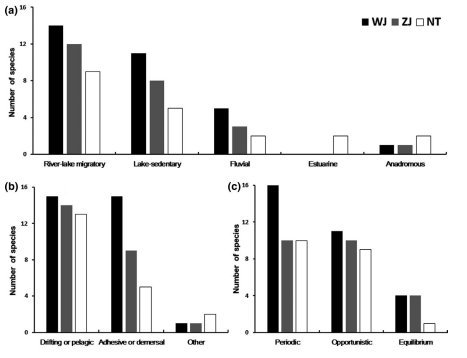
Fall 2021
Red River (Bois D'Arc Creek) Fish Sampling
Sampling began for several projects in the middle Red River. In the fall, the major focus was sampling the Bois D'Arc Creek system as part of two projects investigating the effects that small reservoirs have on upstream fish community diversity and genetic isolation. The Bois D'Arc Creek system is the largest middle Red River tributary in Texas and has three small reservoirs and a new large reservoir that was under construction during sampling. Also, sampling began for two masters projects examining orangebelly darter populations across the broader Red River region.
